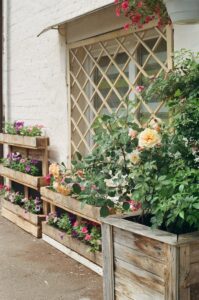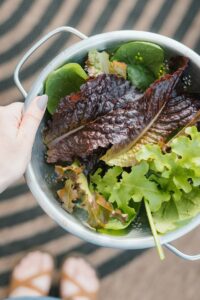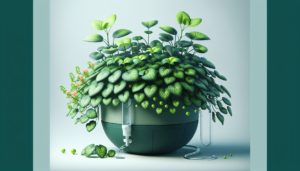Preserving fresh fruits and vegetables’ vibrant flavors and nutritional goodness can be a delightful and rewarding endeavor. Our article, “The Art of Canning: Preserving Fruits and Vegetables at Home,” explores the beautiful world of home canning. From the comforting aromas that waft through the kitchen to the satisfying feeling of seeing rows of colorful jars lining the pantry shelves, we uncover the secrets and techniques behind this age-old practice. Whether you have a bountiful harvest from your garden or want to savor the taste of summer all year round, join us as we embark on a journey to discover the joy of canning.
Benefits of Canning
Canning is an excellent way to preserve fruits and vegetables at home, offering numerous benefits that make it worthwhile. One of the critical advantages of canning is extending the shelf life of your favorite produce. By sealing fruits and vegetables in jars, you can preserve them for months or even years, allowing you to enjoy the flavors of your favorite seasonal produce all year round.
In addition to prolonging shelf life, canning helps preserve the nutritional value of the foods you store. Fruits and vegetables contain essential vitamins, minerals, and antioxidants that contribute to a healthy diet. By canning them, you can lock in these beneficial nutrients, ensuring you have access to them long after the peak growing season.
Another significant benefit of canning is the ability to reduce food waste. We’ve all experienced the disappointment of finding spoiled fruits or vegetables in our fridge, but you can save those on the verge of spoilage with canning. By transforming them into canned goods, you can avoid unnecessary waste and enjoy the delicious flavors of these fruits and vegetables for months to come.
Safety Precautions
While the art of canning is a delightful and rewarding pastime, it is essential to take certain safety precautions to ensure your canned goods are safe to consume. Here are some critical steps to follow:
Choose Fresh and High-Quality Produce
It is essential to select fresh and high-quality produce when canning. Avoid using fruits or vegetables that are overripe, bruised, or showing signs of spoilage. Choose firm, ripe, and free-from-blemishes produce for the best results.
Properly Sterilize Equipment
Before starting the canning process, it is crucial to sterilize all equipment to prevent the growth of harmful bacteria. This includes jars, lids, and any utensils or tools that will come into contact with the food. Sterilizing can be done by boiling the equipment in hot water or using a dishwasher with a sterilization setting.
Use Tested Recipes
To ensure the safety and success of your canned goods, it is crucial to use tested recipes from reliable sources. These recipes have been scientifically developed and tested for optimal preservation and safety. Avoid altering ingredients or methods unless you are an experienced canner.
Ensure Proper Seal
A proper seal is essential for the safety and longevity of your canned goods. After filling the jars, ensure that the lids are tightly secured. To test the seal, press the center of the lid. If it pops back, the jar is not sealed correctly, and the food should be consumed immediately or reprocessed.
Equipment Needed
To embark on your canning journey, it is vital to have the right equipment readily available. Here are some essential items you will need:
Canning Jars
Canning jars are the backbone of the canning process. Choose jars specifically designed for canning, as they are made to withstand the high temperatures and pressure involved. They come in various sizes, so select the appropriate ones for your needs.
Lids and Bands
Lids and bands are necessary for sealing the jars. When properly processed, lids come with a rubber sealing compound that creates an airtight seal. Bands hold the lids in place during processing and should be tightened firmly but not excessively.
Canning Pot or Pressure Canner
A canning pot or pressure canner is used to process the jars. A canning pot is suitable for water bath canning, while a pressure canner is required for low-acid foods that require higher temperatures for safe preservation.
Jar Lifter
A jar lifter is a handy tool for safely handling hot jars during the canning process. Its specially designed-gripping tongs securely hold the jars, minimizing the risk of burns or spills.
Canning Funnel
A canning funnel has a wide opening that fits perfectly on top of canning jars. It helps to guide the food into the jars while minimizing spills and waste.
Bubble Remover Tool
A bubble remover tool is simple but valuable. It helps remove air bubbles from jars before sealing, ensuring the contents are evenly distributed and preventing potential spoilage from trapped air.
Preparing Fruits and Vegetables
Before diving into canning, preparing your fruits and vegetables properly is essential. Here are some steps to follow:
Selecting Ripe and Fresh Produce
Choose ripe, fresh, and of the highest quality fruits and vegetables. Look for produce that is vibrant in color without any signs of decay or spoilage. This will ensure that your canned goods have the best flavor and texture.
Washing and Peeling
Thoroughly wash the produce under cool running water to remove dirt or debris. For some fruits and vegetables, such as apples or carrots, peeling may be necessary. Peel the skin using a vegetable peeler or a paring knife, carefully removing only the outer layer.
Cutting and Slicing
Slice or dice the fruits and vegetables into the desired shape and size. When determining the slicing method, consider the texture and preference of the final product. Some recipes may call for specific cuts or sizes, so follow the instructions.
Blanching (optional)
Blanching is a brief process of immersing fruits or vegetables in boiling water, followed by a quick plunge into ice water. This helps preserve the produce’s color, texture, and flavor before canning. Blanching is often recommended for specific fruits and vegetables, such as peaches or green beans, but it is not always necessary.
Choosing the Right Preservation Method
Different preservation methods are available for canning, and choosing the right one depends on the acidity level of the preserved foods. Here are the two main methods:
Water Bath Canning
Water bath canning suits high-acid fruits and vegetables, such as tomatoes, berries, and pickles. This preservation method involves submerging the filled jars in a large pot of boiling water and processing them at a specific temperature for a set time. The high temperature kills any bacteria or enzymes, ensuring the safety and preservation of the canned goods.
Pressure Canning
Pressure canning is necessary for low-acid foods like beans, carrots, and corn. These foods have a higher pH level, which allows bacteria like Clostridium botulinum to grow and potentially cause foodborne illnesses. Pressure canning involves processing the jars at a higher temperature and pressure to eliminate the risk of bacterial growth.
Water Bath Canning Instructions
Water bath canning is a straightforward process that can be done with just a few basic steps. Here’s how you can water bath your fresh produce:
Preparing Jars and Lids
Before starting, wash the canning jars, lids, and bands with warm soapy water. Rinse them thoroughly and set them aside. Fill a large pot with water and bring it to a simmer. Place the lids and bands in the simmering water, ensuring they are fully submerged. Please keep them in hot water until ready for use.
Filling Jars with Fruits/Vegetables
Carefully pack the prepared fruits or vegetables into the sterilized jars using a canning funnel, leaving a 1/2-inch headspace at the top. Use a spatula or bubble remover tool to gently run along the inside edge of the jar to remove any air bubbles.
Removing Air Bubbles
After filling the jars and removing any air bubbles, wipe the rim of each jar with a clean, damp cloth to ensure there are no food particles or residue. This will help create a proper seal when the lids are applied.
Sealing and Processing Jars
Place a sterilized lid on top of each jar and secure it with a band, tightening it just enough to hold the lid in place. Carefully lower the filled and sealed jars into the pot of simmering water, ensuring they are fully submerged and have at least 1-2 inches of water covering the tops of the jars. Bring the water to a rolling boil and process the jars for the specified time according to your recipe.
Pressure Canning Instructions
Pressure canning requires more care and attention, but it is a safe and effective method for preserving low-acid foods. Follow these steps to pressure your produce:
Preparing Jars and Lids
Clean the canning jars, lids, and bands as described in the water bath canning instructions. Fill the pressure canner with the recommended amount of water and place it on the stove over medium heat. Place the lids and bands in a separate saucepan of simmering water.
Adding Liquid
Add the specified amount of liquid, such as water or a canning liquid, to the pressure canner. This liquid is necessary to create the steam and pressure required for safe processing.
Filling Jars with Fruits/Vegetables
Using a canning funnel, carefully pack the prepared fruits or vegetables into the sterilized jars, leaving the recommended headspace as specified in the recipe. Ensure that there are no air pockets or bubbles.
Closing Jars
Wipe the rim of each jar with a clean, damp cloth to remove any debris or food particles. Place a sterilized lid on top of each jar and secure it with a band, tightening it just enough to hold the lid in place.
Operating the Pressure Canner
Place the sealed jars inside the pressure canner on the rack, ensuring they are evenly spaced and not touching each other. Secure the lid of the canner according to the manufacturer’s instructions and follow the specific guidelines for your recipe regarding pressure and processing time. Adjust the heat to reach and maintain the correct pressure, and monitor the canner throughout the process to ensure it remains at the proper pressure level.
Storing and Using Canned Goods
Once your canned goods have been processed and adequately cooled, storing them correctly and using them promptly is essential. Here are some critical steps to follow:
Properly Labeling and Dating Canned Jars
Label each jar with the contents and the date it was canned. This will help you keep track of what’s inside and ensure that you use the oldest jars first. Use waterproof labels or write directly on the lids to avoid smudging or fading.
Storing in a Cool, Dark Place
Store your canned goods in a cool, dark place like a pantry or cellar. A consistent temperature is critical to maintaining the quality and safety of your preserved fruits and vegetables. Avoid storing canned goods in areas exposed to direct sunlight or significant temperature fluctuations.
Checking for Spoilage
Before using canned goods, it is essential to check for signs of spoilage. Look for bulging lids, leaking jars, or off-putting odors or colors. If you notice any abnormalities, do not consume the contents, as they may indicate spoilage or bacterial growth.
Incorporating Canned Goods in Meals
One of the joys of canning is incorporating your homemade treats into meals throughout the year. Use your canned fruits for breakfast pancakes or desserts, and add canned vegetables to soups, stews, or casseroles. The options are endless, and the taste of summer will brighten even the coldest winter days.
Troubleshooting and Tips
While canning can be a smooth process, occasional challenges may arise. Here are some troubleshooting tips to help you overcome common issues:
Preventing Jar Breakage
Always use jars specifically designed for canning to prevent jar breakage and follow the recommended headspace and processing times. Avoid sudden temperature changes, such as transferring hot jars directly into cold water, as this can cause thermal shock and breakage. Handle jars carefully to minimize the risk of dropping or hitting them against hard surfaces.
Dealing with Spoiled Cans
If you encounter a spoiled can, it is crucial to discard its contents immediately. Do not taste or consume the contents, as they may be contaminated with harmful bacteria. Evaluate your canning process, ensure that you followed proper procedures, and address any potential issues before attempting to do so again.
Adjusting for Altitude
If you live at a high altitude, you may need to adjust your canning process to ensure the safety and quality of your canned goods. Higher altitudes can affect the processing times and pressures required for proper preservation. Consult reputable sources or your local cooperative extension office for altitude-specific canning guidelines.
Experimenting with Flavors
Canning provides a beautiful opportunity to get creative with flavors and combinations. Feel free to experiment with different herbs, spices, or sweeteners to put your unique twist on classic recipes. Keep track of your variations and adjustments so you can recreate your favorite flavors in future batches.
Recipes for Canning
To get you started on your canning journey, here are four delicious recipes to try:
Strawberry Jam
Ingredients:
- 4 cups strawberries, hulled and crushed
- 4 cups granulated sugar
- 1/4 cup lemon juice
Instructions:
- Combine the strawberries, sugar, and lemon juice in a large pot. Stir well and let it sit for 30 minutes.
- Bring the mixture to a rolling boil over medium-high heat, stirring constantly. Continue boiling until the jam reaches the gel stage, about 15-20 minutes.
- Remove from heat and skim off any foam. Ladle the hot jam into sterilized jars, leaving a 1/4-inch headspace. Wipe the rims and seal the jars.
- Process the jars in a water bath canner for 10 minutes. Remove from the canner and let them cool completely before storing.
Tomato Sauce
Ingredients:
- 10 pounds ripe tomatoes
- One large onion, finely chopped
- Four cloves garlic, minced
- 1/4 cup olive oil
- Two teaspoons salt
- One teaspoon sugar
- One teaspoon of dried basil
- One teaspoon dried oregano
- 1/2 teaspoon black pepper
Instructions:
- Bring a large pot of water to a boil. Score a small “X” on the bottom of each tomato. Carefully place the tomatoes in the boiling water and blanch for 30 seconds. Remove them with a slotted spoon and transfer to a bowl of ice water.
- Peel off the skins and remove the cores from the tomatoes. Chop them into small pieces and set aside.
- In a separate large pot, heat the olive oil over medium heat. Add the chopped onion and garlic and sauté until translucent.
- Add the chopped tomatoes, salt, sugar, basil, oregano, and black pepper to the pot. Bring the mixture to a simmer and cook for 2-3 hours, until the sauce has thickened.
- Ladle the hot sauce into sterilized jars, leaving a 1/2-inch headspace. Wipe the rims and seal the jars.
- Process the jars in a water bath canner for 35 minutes. Remove from the canner and let them cool completely before storing.
Peach Salsa
Ingredients:
- 4 cups diced peaches
- 1 cup diced red bell pepper
- 1/2 cup diced red onion
- 1/4 cup finely chopped jalapeno pepper
- 1/4 cup fresh lime juice
- Two tablespoons chopped fresh cilantro
- One tablespoon honey
- 1/2 teaspoon salt
Instructions:
- Combine the diced peaches, red bell pepper, red onion, jalapeno pepper, lime juice, cilantro, honey, and salt in a large bowl. Stir well to combine.
- Ladle the salsa into sterilized jars, leaving a 1/2-inch headspace. Wipe the rims and seal the jars.
- Process the jars in a water bath canner for 15 minutes. Remove from the canner and let them cool completely before storing.
Dill Pickles
Ingredients:
- 4 pounds pickling cucumbers
- 4 cups water
- 4 cups distilled white vinegar
- 1/2 cup pickling salt
- Eight garlic cloves, peeled
- Four teaspoons of dill seeds
- Four teaspoons of mustard seeds
- One teaspoon of black peppercorns
- One teaspoon of red pepper flakes
Instructions:
- Rinse the cucumbers and trim any blossom ends. Cut them into desired shapes, such as spears, slices, or whole.
- Combine the water, vinegar, and pickling salt in a large saucepan. Bring the mixture to a boil, stirring occasionally.
- In each sterilized jar, place two garlic cloves, one teaspoon dill of eds, one teaspoon of mustard seeds, 1/4 teaspoon black pof peppercorns, and 1/4 teaspoon red pepper flake. Pack the cucumbers tightly into the jars, leaving a 1/2-inch headspace.
- Pour the hot brine over the cucumbers, maintaining a 1/2-inch headspace. Wipe the rims and seal the jars.
- Process the jars in a water bath canner for 10 minutes. Remove from the canner and let them cool completely before storing.
With these recipes and guidelines, you are well-equipped to embark on your canning adventure. Enjoy preserving your favorite fruits and vegetables and savor the taste of summer all year round!



